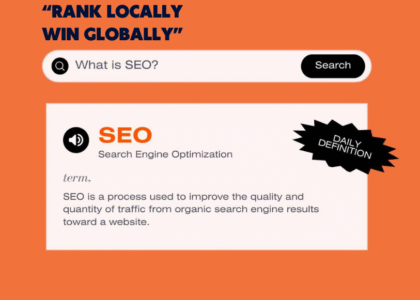Modern AI systems are only as powerful as the data they learn from. While companies invest millions in sophisticated algorithms and cutting-edge architectures, the real foundation of successful AI lies in high-quality training data. Without it, even the most advanced neural networks will struggle to deliver reliable results.
This comprehensive guide explores AI training data providers, their services, and why partnering with specialists can make or break your AI initiatives. You’ll discover the types of datasets available, common challenges in data collection, emerging trends shaping the industry, and best practices for managing training data effectively.
What Are AI Training Data Providers?
AI training data providers are specialized companies that help organizations source, prepare, and deliver the datasets required to train machine learning and deep learning models. These providers handle the complex, time-consuming process of creating high-quality training data so your internal teams can focus on model development and deployment.
Key Services Offered by Training Data Providers
Custom Data Collection
Providers design and execute targeted data collection campaigns tailored to your specific requirements. Whether you need industrial imagery for defect detection, specialized sensor data for predictive maintenance, or proprietary text corpora for natural language processing, they source exactly what your model requires.
Data Cleaning & Validation
Raw data often contains noise, errors, and inconsistencies that can derail model performance. Professional providers implement rigorous cleaning and validation processes, removing outliers, fixing errors, and ensuring data reliability before it reaches your training pipeline.
Annotation & Labeling
Structured, labeled data is essential for supervised learning. Providers offer expert annotation services across multiple data types—from object tagging in images to speech-to-text transcription, video annotation, and complex sensor data labeling.
Pipeline Management & Compliance
Leading providers build scalable, reproducible data pipelines that deliver training data while maintaining compliance with privacy regulations like GDPR and industry-specific standards. They handle security, version control, and audit trails to protect your organization from compliance risks.
Types of Datasets Provided
Understanding the different types of training data is crucial because each category demands specific expertise in collection, annotation, and validation. Here’s a breakdown of the most common dataset types:
Text Datasets
Text datasets power natural language processing applications, chatbots, and document classification systems. These collections include diverse written content—from customer support tickets and financial reports to social media posts and technical manuals.
Common applications include:
- Sentiment analysis for customer feedback
- Document classification for legal or financial services
- Chatbot training for customer support
- Content moderation for social platforms
Text datasets often require domain-specific linguists or subject-matter experts to ensure accurate labeling, especially for technical or specialized content.
Image Datasets
Image datasets fuel computer vision applications across industries. These collections range from product photos and medical scans to satellite imagery and manufacturing inspection data.
Typical use cases include:
- Quality control in manufacturing
- Medical diagnosis assistance
- Autonomous vehicle perception
- Retail product recognition
High-quality image annotation requires trained annotators who understand exactly what features matter—particularly in industrial settings where subtle details like hairline cracks or color variations can be critical.
Audio Datasets
Audio datasets enable speech recognition, voice biometrics, and audio classification systems. These collections include speech recordings, environmental sounds, music, and specialized audio like call center conversations.
Popular applications include:
- Voice assistants and speech recognition
- Audio surveillance and security
- Music recommendation systems
- Call center analytics
Audio data collection demands quality recording equipment and consistent labeling guidelines, especially when dealing with multiple languages, dialects, or accents.
Video Datasets
Video datasets support action recognition, surveillance analytics, and video understanding applications. These collections include security footage, sports videos, manufacturing processes, and traffic monitoring data.
Key use cases include:
- Behavioral analysis for security
- Process optimization in manufacturing
- Sports performance analysis
- Traffic management systems
Video annotation is particularly labor-intensive, often requiring frame-by-frame labeling or object tracking across thousands of frames.
Sensor Data
Sensor datasets enable Internet of Things (IoT) applications, robotics, and predictive maintenance systems. These collections include data from temperature sensors, accelerometers, LiDAR systems, and industrial monitoring equipment.
Applications include:
- Predictive maintenance for manufacturing equipment
- Autonomous vehicle navigation
- Smart building management
- Industrial process optimization
Working with sensor data requires deep technical domain knowledge. For example, labeling LiDAR point clouds involves understanding how distance, reflectivity, and environmental factors interact in three-dimensional space.
Use Cases and Applications
Different industries leverage AI training data providers for various applications:
Manufacturing: Companies use image datasets for quality inspection, sensor data for predictive maintenance, and video datasets for process optimization. Training data helps identify defects, predict equipment failures, and optimize production workflows.
Healthcare: Medical institutions require specialized image datasets for diagnostic AI, audio datasets for patient monitoring, and text datasets for clinical documentation. Privacy compliance is particularly critical in this sector.
Financial Services: Banks and fintech companies use text datasets for fraud detection, document processing, and customer service automation. Audio datasets support voice biometrics and call center analytics.
Retail and E-commerce: Retailers leverage image datasets for product recognition, text datasets for recommendation systems, and multimodal datasets combining product images with descriptions for enhanced search capabilities.
Transportation: Autonomous vehicle companies require massive amounts of sensor data, video datasets, and multimodal datasets combining camera, LiDAR, and radar information for safe navigation.
Trends Shaping 2025
The AI training data landscape is evolving rapidly, driven by technological advances and changing business needs:
Synthetic Data Generation
AI systems can now generate realistic synthetic data to augment real-world datasets. This approach helps address data scarcity issues and privacy concerns by creating artificial samples that maintain statistical properties of real data without containing actual sensitive information.
Self-Supervised Learning
New learning techniques allow models to train on unlabeled data by learning from auxiliary tasks—like predicting missing words in text or reconstructing masked image regions. This reduces annotation requirements and often improves model robustness.
Data-Centric AI Movement
The focus is shifting from improving model architectures to optimizing datasets themselves. Organizations are discovering that iteratively cleaning, re-labeling, and augmenting data often yields bigger performance gains than tweaking model parameters.
Enhanced Compliance Features
With stricter privacy regulations worldwide, training data providers are implementing advanced anonymization techniques, consent management systems, and audit trails to ensure GDPR, HIPAA, and other regulatory compliance.
Best Practices for Managing Training Data
Successful AI projects require systematic approaches to data management:
Ensure Diversity and Representativeness
Collect data from multiple sources to avoid bias and ensure your model generalizes well. Balance your dataset across different scenarios, demographics, and edge cases that your AI system might encounter in production.
Implement Quality Checks
Establish inter-annotator agreement measurements, automated validation rules, and regular spot checks by domain experts. Consistent quality monitoring prevents errors from propagating through your training pipeline.
Maintain Version Control
Track every change to your datasets with detailed version histories, metadata documentation, and comprehensive change logs. This ensures reproducibility and helps diagnose performance issues.
Ensure Regulatory Compliance
Strip personally identifiable information, maintain proper consent records, and vet third-party providers for compliance with relevant regulations. Establish clear data processing agreements that specify permissible uses and security measures.
Making Your AI Investment Count
The success of your AI initiatives depends fundamentally on the quality of your training data. Poor data quality leads to unreliable models, failed deployments, and wasted resources—regardless of how sophisticated your algorithms might be.
Professional AI training data providers offer the expertise, tools, and processes needed to create high-quality datasets at scale. By partnering with specialists, you can accelerate development timelines, improve model performance, and ensure compliance with industry regulations.
As you plan your next AI project, remember that investing in quality training data upfront saves time, money, and frustration later. The organizations that recognize this truth and act on it will gain significant competitive advantages in the AI-driven future.
Ready to elevate your AI capabilities? Consider partnering with a specialized training data provider to unlock the full potential of your machine learning initiatives.






